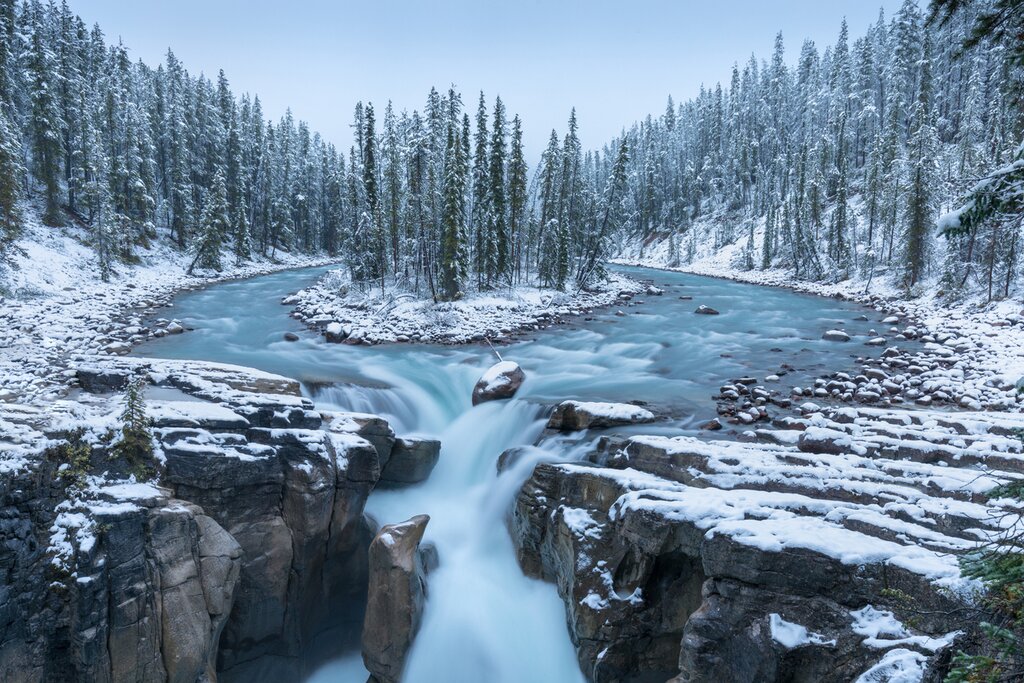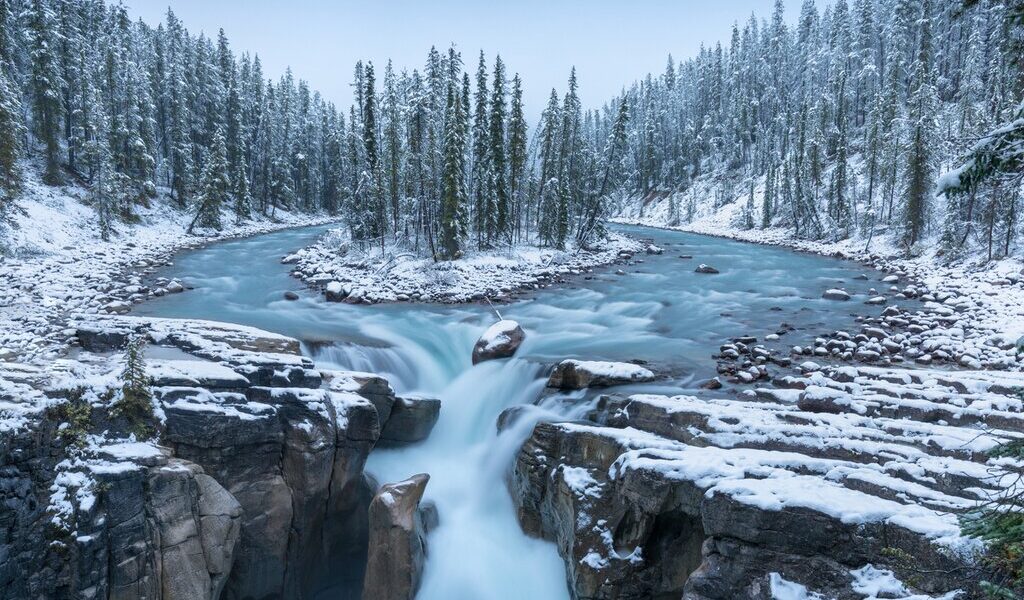
Wherever you go in Canada, January is the coldest month of the year. That’s great news if you’re a keen skier or snowboarder or would like to try other fun winter sports. From snowshoeing in British Columbia to ice skating in the capital, Ottawa, or just hunkering down indoors and enjoying a museum (or three), there’s a lot to do in Canada in January.
Canada in January: A Comprehensive Guide
## Weather in the Heart of Winter
January in Canada marks the heart of winter, often regarded as the country’s coldest month. However, due to Canada’s immense size and diverse geography, characterized by coastlines, landlocked regions, towering mountains, and sprawling plains, making a blanket statement about the weather across the entire nation is simply impossible. One can, however, confidently assert that temperatures will be decidedly cold throughout the month. The specific intensity of the cold is contingent upon factors such as latitude, altitude, and proximity to the sea. Inland areas tend to experience lower temperatures compared to coastal regions, while coastal areas generally exhibit milder and wetter conditions.
To illustrate this point, consider **Québec City** in eastern Canada, located relatively close to the coast but not directly on it. Here, the average minimum temperature in January hovers around a frigid 7°F (-14°C), while the maximum temperature reaches a slightly less biting 21°F (-6°C). Contrast this with **Toronto**, which is situated further inland but benefits from its location on one of the Great Lakes, namely **Lake Ontario**. Toronto experiences a minimum January temperature of 18°F (-8°C) and a maximum of 30°F (-1°C). On the western side of the country, the inland city of **Calgary** encounters similarly cold temperatures, with a minimum of 12°F (-11°C) and a maximum of 30°F (-1°C). In stark contrast, the coastal city of **Vancouver** enjoys a relatively milder climate, with an average minimum temperature of 36°F (2°C) and a maximum of 43°F (6°C).
It’s crucial to note that these cities, despite their varying degrees of cold, are all situated relatively far south within Canada, in close proximity to the US border. As you venture further north, the temperatures plummet even further, and the days become shorter, casting a longer shadow over the landscape throughout January. The daylight hours diminish significantly, adding another layer of challenge for those unaccustomed to prolonged periods of darkness.
## Navigating Crowds and Costs
January marks the peak season for skiing and other exhilarating snow sports in the resort towns nestled within the majestic **Rocky Mountains** of **Alberta** and **British Columbia**, as well as the areas surrounding Vancouver. In popular resorts such as **Whistler**, **Revelstoke**, **Kicking Horse**, and **Banff**, securing accommodation well in advance is paramount, particularly if your travels coincide with the early part of the month when many individuals are still enjoying their winter vacations from work and school. Be prepared to encounter higher prices for both accommodation and transportation to these sought-after destinations. The demand is high, and the prices reflect the allure of the pristine slopes and exhilarating winter activities.
Outside of these bustling ski resorts, January is generally considered the low season for travel throughout the rest of Canada. Unless you possess a strong desire to embrace sub-zero conditions by actively participating in winter sports, this month is often viewed as a period of hibernation for many. However, it’s important to remember that you can still partake in a variety of enjoyable activities in Canada’s vibrant cities, and you’ll likely benefit from lower prices compared to peak seasons. Take advantage of the reduced crowds and explore the cultural attractions, indulge in culinary delights, and immerse yourself in the unique atmosphere of each city.
Keep in mind that smaller inland towns and cities that are not primarily geared towards the skiing community may have limited tourism facilities open during January. You’re more likely to find favorable deals on accommodation and more manageable winter conditions in the coastal regions, where the climate is generally milder and the infrastructure is better equipped to handle winter tourism.
## Destinations to Consider
**Vancouver** stands out as an excellent choice for travelers visiting Canada in January, offering a multitude of advantages. Its relatively mild climate, despite the dampness, allows visitors to comfortably stroll around the city and explore its various attractions. The **Vancouver Museum of Art** and the **Museum of Anthropology** are essential destinations for those seeking to delve into the rich history and culture of the local First Nations people. Furthermore, Vancouver boasts a remarkable ethnic diversity and a thriving foodie scene, making it an ideal destination for a mid-winter getaway. The culinary landscape is a tapestry of flavors, reflecting the city’s multicultural makeup.
Moreover, Vancouver’s proximity to numerous outstanding ski resorts in the nearby mountains makes it an ideal base for a winter sports vacation. Just a short distance north or southeast of the city, you’ll find **Whistler**, **Grouse Mountain**, and **Cypress Mountain**, among others, offering exceptional opportunities for skiing, snowboarding, and snowshoeing adventures throughout January. Vancouver should undoubtedly be on your shortlist if you’re traveling with a group that has diverse interests and preferences. There’s something for everyone to enjoy, from cultural experiences to thrilling outdoor activities.
For those seeking a more secluded and less crowded experience, consider venturing to the **Kootenay Rockies**, situated northeast of Vancouver and southwest of **Calgary**. The renowned **Powder Highway**, encircling the Kootenay and **Selkirk Mountains**, provides access to a variety of resorts, including **Revelstoke**, **Fernie**, and **Kicking Horse**, as well as exhilarating heli-ski adventures for experienced skiers seeking an adrenaline rush. The Kootenay Rockies offer a chance to escape the hustle and bustle and immerse yourself in the pristine beauty of the Canadian wilderness.
## Activities to Embrace
January presents an ideal opportunity to indulge in skiing, but you don’t necessarily need to be an avid or experienced skier to fully appreciate the Canadian winter. Consider trying snowshoeing or tubing instead, offering alternative ways to enjoy the snow-covered landscapes. Northwest of Vancouver, **Howe Sound** is home to the remarkable **Sea to Sky Gondola**. In addition to providing breathtaking views of the fjord and surrounding mountains, a ride on the gondola will transport you to areas with some of the deepest snow in North America, perfect for snowshoeing adventures. Families can also revel in the excitement of slip-sliding on inflated inner tubes at the Tube Park located at the top of the gondola.
Certain western regions of Canada are also fortunate to possess natural hot springs, offering a delightful way to warm up amidst the cold weather. In Alberta, the **Banff Upper Hot Springs** in **Banff National Park** and the **Miette Hot Springs** in **Jasper National Park** hold historical significance, having been operational since the 19th century. These natural hot springs provide a soothing and therapeutic experience, allowing you to relax and rejuvenate amidst the stunning scenery.
Ice skating is another cherished Canadian winter pastime. In **Ottawa**, located on the opposite side of the country, the entire length of the **Rideau Canal** transforms into a magnificent *skateway* from January to late February or early March. This 4.8-mile (7.8-km) canal, a designated UNESCO World Heritage Site, offers a unique opportunity to skate and even walk for free along its frozen surface. It’s a truly memorable experience that captures the essence of Canadian winter culture.
## January Events to Experience
* **Chinese/Lunar New Year**, particularly in **Vancouver**. Given the significant ethnic Chinese population residing in Vancouver and the nearby city of Richmond, this is a grand celebration marked by a spectacular parade, vibrant street festivals, and enticing food events. The Chinese New Year can occur in either January or February, depending on the lunar calendar.
* **Rossland Winter Carnival**, in **Rossland**. This long-standing festival, dating back to 1898, features exhilarating bobsled races, festive parades, captivating performances, and a unique ice palace-beer garden. It’s a fun-filled celebration of winter in this mountain town nestled in the Kootenay Rockies.
* **Coldsnap Winter Music Festival**, in **Prince George**. For more than a week in January, the city of Prince George, situated on the northern coast of British Columbia, comes alive with music as international artists perform across various venues and conduct engaging music workshops. It’s a vibrant celebration of music that brightens the winter nights.
* **Fête des neiges de Montréal**, in **Montréal**. This family-friendly event, held over four consecutive weekends in Montréal’s Parc Jean-Drapeau, offers a wide array of winter activities, including ice skating, snowshoeing, cross-country skiing, and more. It’s a perfect opportunity to embrace the winter season and create lasting memories with loved ones.
B-249

